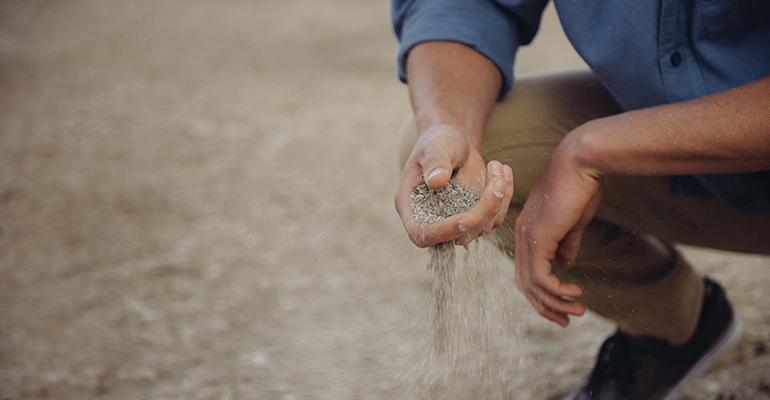- AUTHORFuture drought could drain primary sector profit
- Monday, May 17, 2021
Future drought could drain primary sector profit

New research by the Deep South Challenge and Manaaki Whenua – Landcare Research, with the support of Motu Economic and Public Policy Research, finds a strong relationship between more intense future drought and drops in farm profit.
In the year 2100, our 10-year-old children will be 90 years old. Their children – our grandchildren – will be managing farms in a far more tricky climate than we have to negotiate today. Year on year drought is still uncommon in Aotearoa, giving farmers opportunities to recover – financially, mentally and environmentally. But uncontrolled climate change is likely to bring somewhat more severe and far more frequent drought.
This research draws on 70,000 tax returns and temperature and soil moisture data, to understand the historical relationship between local weather and farm profits in both the dairy and sheep+beef industries. Controlling for prices and farm management, the research shows a clear effect. Extrapolating on the clear relationship, future climate change scenarios were tested to understand how much future farm profit might be under pressure, due to reduced soil moisture and increased temperatures.
Under a high climate change scenario (RCP8.5) – the pathway representing little climate action and high economic growth – sheep and beef farmers could see a profit loss of up to 54% by the end of the century, subject to a high degree of uncertainty. Analysis suggests that sheep and beef farms are vulnerable to high temperatures as well as soil moisture loss, while dairy shows an unclear effect of high temperatures, but is clearly sensitive to soil moisture loss (according to this modelling).
Looking only at changes in soil moisture, both dairy and sheep and beef show a decrease in profit by 2100 (an average of 20% for dairy and 7% for sheep and beef).
A more moderate climate change scenario (RCP4.5) suggests – unsurprisingly – more moderate losses considering soil moisture changes alone.
Manaaki Whenua research co-lead, Dr Kendon Bell, notes that one potential use of these results is to better understand how climate change might encourage farmers and growers to implement adaptation measures, or even to change what they farm and where. Due to large capital investments, it’s difficult for farmers to change the way they use their land. And the creeping pace of climate change will not likely force land-use change in the near future. Yet this research suggests that land-use change should at least be on the cards in some places.
“However,” Kenny continues, “what’s important is the relative attractiveness of animal versus other land uses. To gain a full understanding of how climate change might affect land-use pressures, we require profit-weather functions for all relevant land uses, in addition to those provided here for dairy and sheep and beef.”
Kenny continues, “Given that animal agriculture is a major contributor to both climate change and water pollution, understanding the extent to which climate change might affect this baseline over time is important for policy considerations over the coming decades.”
“Understanding the scale of the expected impacts of climate change across all sectors is key for central government when considering future budgets for adaptation support. If, as a hypothetical example, the scale of expected net damages to agriculture was 1% of the expected net harm to human health, it would be difficult to justify putting 50% of central government’s adaptation budget into agriculture. However, these quantitative comparisons are not yet straightforward, because the underlying quantitative studies have not yet been executed across all sectors.”
Further analysis, led by Lynn Riggs of Motu Economic Policy and Research, examined the impact of past, present and future drought on employment. Overall, the relationship between drought and employment in New Zealand appears to be complicated, with soil moisture and temperature having different and sometimes offsetting effects within and across industries. Dairy shows the strongest correlation, with the relationship between monthly soil moisture and monthly employment consistently showing up as strong and positive.
In New Zealand, there is very little research about the implications of climate change for society using approaches that measure the historical relationship between weather conditions and economic and social outcomes. This research is among the first to do so. Rural communities may bear a large share of the burden of reducing emissions and our job here has been to try and understand, using real financial data, the size of the additional burden (or benefit) that climate change might impose.
ON Tuesday 18 May, at 11am, Kenny Bell will be presenting a zoom webinar about these results – part of an ongoing Rolling Symposium on Drought: “Growing Kai under Increasing Dry.” We invite interested journalists to first attend the webinar. Register via EventBrite here: https://www.eventbrite.co.nz/e/2-drought-and-the-changing-climate-farm-profits-and-community-resilience-registration-150644741477